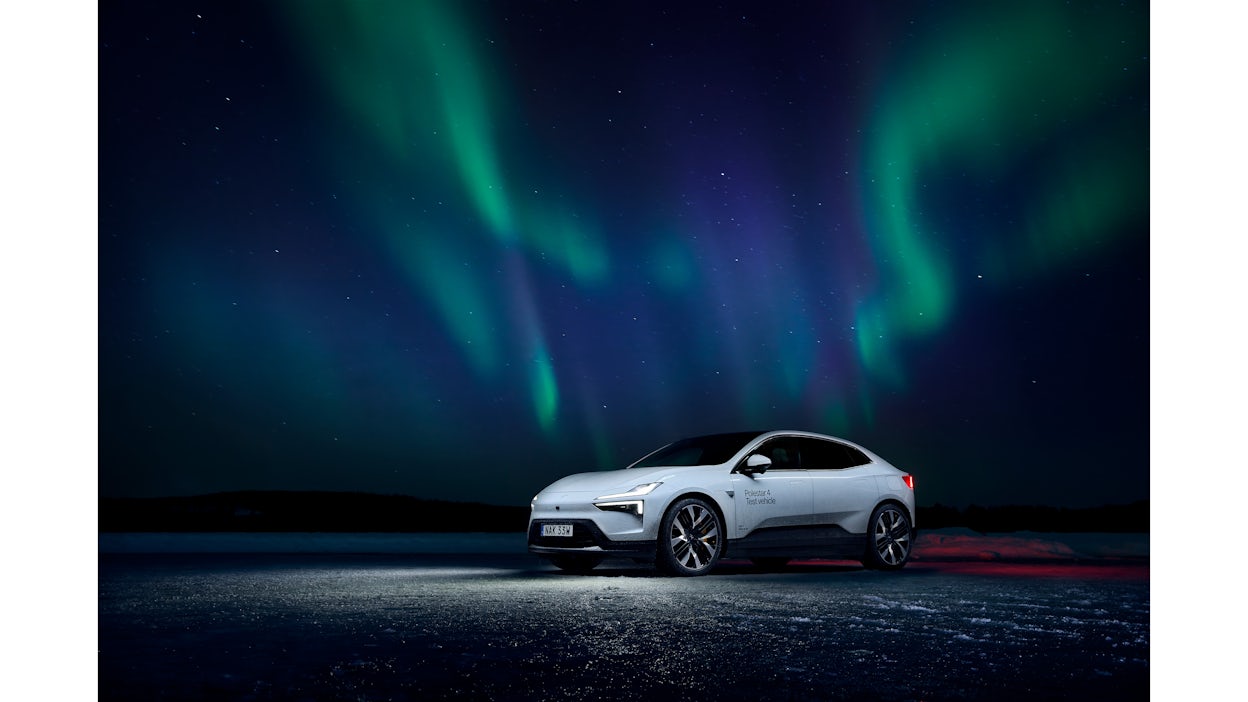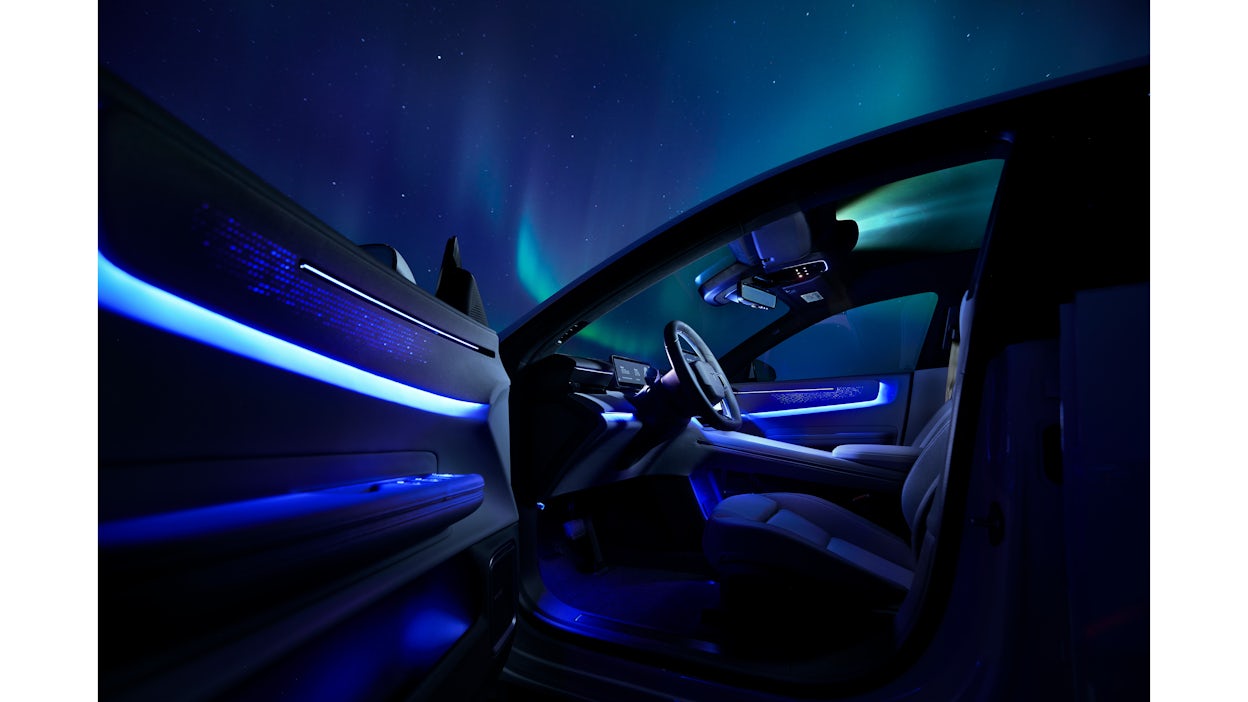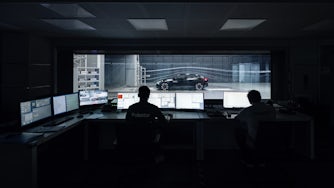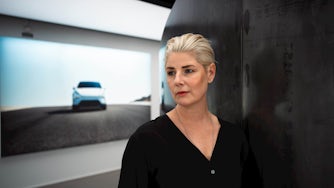How we fit our solar system in Polestar 4
Our solar system consists of the Sun, eight planets, five dwarf planets, moons, asteroids, comets, and an assortment of other small celestial bodies. This patch of the Galaxy has long captivated the human imagination and yearned to be explored. But instead of taking Polestar 4 to space, we brought space to Polestar 4.
From the fiery glow of Mars to the serene blue hues of Neptune, each planet in our solar system inspires a unique allure. And now, this cosmic ambience has found its way into the interior design of Polestar 4.
One of the most striking features of our SUV-coupé is its use of ambient lighting to evoke the aura of different planets in our solar system. With a simple touch, drivers can choose between various planetary themes, each accompanied by a unique colour palette. From the warm, fiery tones of Mercury to the cool, ethereal hues of Saturn, the possibilities are as vast as the solar system itself.
The birth of an idea
At the helm of this celestial voyage is Benjamin Pérot, Lead Interior Designer for Polestar 4, who played a pivotal role in shaping the solar system-inspired interior ambience.
Benjamin explains that the inspiration behind this design decision stemmed from Polestar's identity as a celestial entity, symbolised by the star emblem that accentuates our vehicles. And with Polestar being a star in its own right, there exists an inherent galactic essence that permeates the brand's identity.
Benjamin and the Design team saw an opportunity to elevate this cosmic motif by integrating it into Polestar 4's interior. But the initial inspiration came from cross-functional collaboration between designers from a range of departments: UX, Colour and Trim, and Interior Design. The idea came up during brainstorming and eventually stuck.
"The fun thing about Polestar Design is we’re like a family. We are a small team and everything is quite transparent, so a good idea is contagious," Benjamin explains when talking about how the idea came to fruition.

We are a small team and everything is quite transparent, so a good idea is contagious.
The deco panels that wrap around a car’s door are traditionally made from wood or metal. In the Polestar 4, this wood and metal have been replaced with ultra-fine mesh textile. This allowed for the panels to be backlit, which resulted in a stardust-like appearance. What started as a change in material choice sparked the idea to develop this concept even further with the solar system theme.
“When creating the deco panels that wrap around the doors, we realised that we could make this deco come to life by creating some lighting perforation. This, together with the laser-edged precise light line locked into the door, resembled a shooting star creating stardust,” Benjamin continues. From then on, conversations with numerous teams across Polestar started to take place.
The inspiration behind the decision to incorporate a solar system theme was not merely aesthetic but rooted in a desire to push the boundaries of interior design. Collaborating with various departments, including UX designers and engineers, the process involved several stages of testing and trials.
Redefining rear compartment design
In crafting the interior design of Polestar 4, one significant challenge and (most importantly) opportunity presented itself: the absence of a rear-view window. Benjamin describes this as a pivotal moment in the design process, as it required a departure from conventional automotive interiors. Unlike previous models or typical cars, Polestar 4's rear compartment lacked this traditional feature, opening up new avenues for design innovation.
This unique characteristic prompted the design team to reimagine the ambience in the rear compartment. Instead of seeing this as a constraint, they took it as an opportunity to create a space that exuded comfort and exclusivity.
"The first thing we were thinking is how it’s going to feel to sit in the rear of a cabin without a rear window. Sceptics were worried about the absence of light and an enclosed feeling. However, this is not the case for Polestar 4,” Benjamin explains.
The solution lay in leveraging Polestar 4's expansive glass roof to flood the rear compartment with natural light. This illumination served as the foundation for a transformative design element: lighting. By strategically integrating lighting elements into the rear compartment, Benjamin and his team were able to enhance the space in a way that defied traditional expectations.

Lighting the way
The result is a rear compartment enveloped in an orbit of light, creating an atmospheric and enriched experience. Despite the absence of a rear-view window, Polestar 4's rear compartment exudes a sense of spaciousness, inviting occupants to relax and enjoy the journey.
“Every time I open the rear door of Polestar 4, I see this band of light wrapping around the rear seat. I’ve never wanted to sit in the rear seats as much as I do in this car,” Benjamin continues.
Moreover, this innovative approach to lighting not only enhances the interior ambience but also complements the overall design aesthetic of the Polestar 4. As Benjamin explains, the lighting elements contribute to the dynamic architecture theme of the cabin, creating a sense of continuity and fluidity.
“We wanted to bring customisability to the customers, and integrating the solar system-themed illumination allowed for just that as we pushed the story further with the UX team,” he says. Polestar 4 owners will be able to switch between several lightning settings and moods with the bespoke solar system layout in the HMI, as well as learn some facts about the chosen planet.
Turning ideas into reality
However, the path to achieving this visionary design was not without its challenges. Benjamin emphasises the importance of collaboration with engineering teams to translate sketches into reality. From fine-tuning lighting projections to ensuring seamless integration with the vehicle's architecture, every detail was crafted to perfection.
"The fact that we have many challenges is what I think makes our job fun. We start by doing sketches, but the fun, challenging part is how we make this happen in production.”
Polestar 4 is officially on sale in Europe and Australia. Explore the car here.


